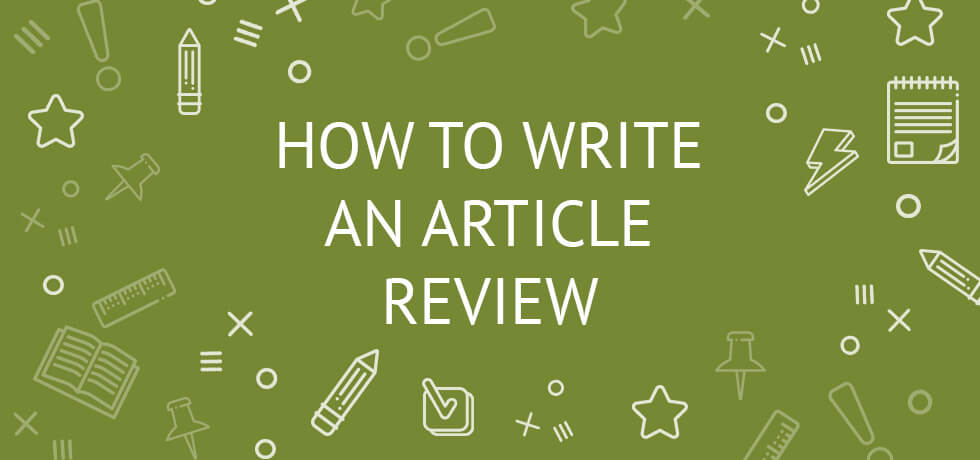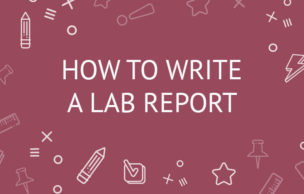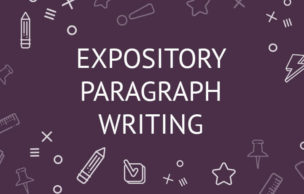How To Write an Article Review
An article review is a piece of writing where you summarize and assess someone else's article. The goal of assigning article reviews is to get the students familiar with the works of the renowned specialists in a particular field. These specialists also have to review each other’s articles on a regular basis. To summarize the article properly, one needs to comprehend the essence of the work, its argument, and its main points. You are expected to assess the main theme, its supporting arguments, and the perspectives for further research in the given direction. Like any other written piece, an article review requires thorough preparation. Hence, article review writing process consists of two stages: preparation and writing.
STAGE 1: PREPARATION
Step 1. Define an article review
You write it not for the general public but for the readership familiar with the field of knowledge. This review is to summarize the essence of the article, its key arguments, and findings, and the author's attitude towards the subject-matter. You also assess the new knowledge that the author has brought to the discipline and its application potential.
Writing an article review is not just about expressing your opinion on the work. It is a fully-fledged evaluation of the author's ideas expressed in the article. As you analyze the article, you use your own ideas and research experience. Your overall conclusions about the article base off on your own judgment backed up by your experience in this field and your common sense.
You only talk about the research already performed by the article's author. You do not perform any new research yourself. It's not synthesis essay prompt example, so you don't need to focus on some others opinions as well.
Step 2. Plan your work on the review
You should know exactly how you will be writing your article review before you even read the article in question. This is because you should know which points of the article are most important to your review in advance. The article review outline usually goes like this:
- Summary of the article. The most important point, facts, and claims
- Redeeming features. The author’s strong points and the most insightful parts of the article
- Drawbacks. Point out the possible gaps of information, logical inconsistencies, the contradiction of ideas, unanswered questions, etc. Pass your judgment as to whether the given facts are sufficient for supporting the author's main argument.
Step 3. Get a quick glimpse of the article
Browse through the article’s title, abstract, headings. Read the introduction, the conclusion, the first sentences of each paragraph. Then read several opening paragraphs. This should be enough to get the initial grasp of the author’s main points and argument. Only then you should read the whole article. This first reading is only for getting the overall idea of the point that the author sought to make with this article.
- If you come across any notions or concepts that you don't fully understand or if any questions arise, make notes.
- Look up terms you are unfamiliar with, so you can fully understand the article.
Step 4. Read the article in all attention
Carefully read the article several more times. If you are reading it from a screen, use a highlighter for the most meaningful parts. If you are using a print version, use a pen. The most meaningful parts here are the main points and the facts to support them. Don’t be tempted to just highlight every paragraph. Instead, make notes on the margins and draw connections between different parts of the article.
- Supplement what you read with what you already know about the subject-matter. This may be either something you have discussed at school or something you have read on your own. Does your existing knowledge support the ideas in the article or contradict them? What previous knowledge does the author refer to? Point out the similarities the article shares with what you have read on the topic before, as well as the differences. At this point it may be similar to respond essay.
- If you come across a section that you do not fully understand, you should not leave it like this. You can only write a solid article review if you have made sure that you understand everything there is to understand in and about the article.
Step 5. Retell the article to yourself
It is best to do it in written form, such as an outline or a piece of free writing. Basically, you just put the information you have just read in your own words. This should include the author's claim, the conducted research, and the argument(s). You need to be careful and accurate not to miss any important details.
This text is only for your use, so it does not need any editing or proofreading, but it needs to be clear so that you could return to it at any time and not spend time remembering what exactly you meant by this or that.
- If you choose to write an outline, it is better not to include your opinions here. Instead, you should better stick to the main points of the article.
- Having retold the gist of the article, take your time and decide which parts are worth discussing in the review. While you always have to discuss the main issues, it is also worth to concentrate certain aspects such as the content, the interpretation of facts, the theoretical basis, the style of narration, etc. Sometimes, your tutor will specify on what you should focus.
- Re-read your summary to cross out the items that can be omitted. This can be repeated information or something not critical to your cause.
Step 6. Outline your review
Look at your summary to see if the author was clear about each of them. Mark the result section that could use some improvement, as well as the ones where the author was clear and accurate and where s/he pointed out something innovative. Then put together the lists of strong points and drawbacks and summarize them. For example, a strong point may be the introduction of new information, and a drawback may be the lack of accuracy in representing the existing knowledge on the topic. Add these outcomes to your study and back them up with evidence from the text of the article.
Answering these questions should facilitate your outline writing:
- What was the goal of the article?
- What theories does the author dwell upon?
- Is the author clear with definitions?
- Is the supportive evidence relevant?
- What is the place of the article in its field of knowledge?
- Does it contribute to the progress in this field?
- Does the author convey his or her thoughts clearly?
It is crucial that you provide a non-biased judgment, so you need to try and steer clear from being judgmental and giving too much personal opinion.
STAGE 2. WRITING

Step 1. Think of a title for your writing
The title of your review should hint on its focus that you have chosen in one of the previous steps. A title can be descriptive, declarative or interrogative.
Step 2. Cite the article that you are reviewing
This should be placed under the title. Remember to use the specified citation style (APA, ASA, Chicago / Turabian, MLA). The main body of your review should start right after this citation, without skipping a line.
For example, here is how you cite an article in Chicago / Turabian format style:
Smith, John, and Jane Doe. “Studies in pop rocks and Coke.” Weird Science 12 (2009)Step 3. Provide the general information about the article that you are reviewing.
Start your review with mentioning the title of the article under review, its author(s), as well as the title of the journal and the year of publication.
For example: The article, "Studies in pop rocks and Coke" was written by pop-art enthusiasts John Smith and Jane Doe.
Step 4. Write your introduction
Your introduction should be the utmost laconic gist of the article under review. Here, you state the author's thesis. If the thesis is not stated in the article, it is up to you to figure it out yourself. The introduction should also include article main theme and the author's main claim.
Use the formal style and narrate impersonally or from the third person, avoid the first person.
- Usually, the introduction should comprise about 10-15% of your review, but not more than 25%
- The introduction is summed up by your own thesis where you briefly mention the article strongest point and main drawback. For example, “The authors do draw a clear correlation between pop and coke, but the evidence about rock is clearly misinterpreted.”
Step 5. Give an overview of the article
Use your own words to explain the article’s main claim, main points, and research results. Your summary should be of help here. Demonstrate how the evidence supports the argument in the article. Mention the conclusions drawn by the author. Your tutor will determine how long the introduction should be, but normally it takes several paragraphs.
Be as laconic as you can and include as much information as possible. For this purpose, avoid mentioning the information that your reader is already familiar with.
- Drop one or two direct quotes
- Review your introduction to make sure that it accurately reflects the article.
Step 6. Write the main body of your review
This is the core of the review. Check with your summary and describe how well the topic is covered in the article. Here you assess how clear and insightful the article is. Usually, you will be required to talk about each of the article's main points separately and describe how well the given evidence supports them. If you have spotted any bias, you should mention it. Finally, you pass the judgment as to how the author contributes to the understanding of the subject-matter and, hence, the article's overall importance. Also, you agree or disagree with the author and ground your opinion. You conclude the main body of your review by suggesting your reader what exactly they can bring out from reading the article.
Remember to stick to the point and make sure that there is no unrelated information. It should be about the article’s strong points and drawbacks with their descriptions ultimately interconnected to form your own reviewer’s thesis.
- Your judgments should be backed by other writings on the topic.
- Make sure that your summary of the article is logically connected to the section where you assess it.
- It is worth repeating that a review is not where you share your personal opinion. It is about how relevant and important the article under review is.
- Remember that each bit of your opinion that you introduce should be backed up by indisputable evidence.
Step 7. Write your conclusion
The conclusion is usually one paragraph long and takes no more than 10% of your article review. This is where you briefly restate the main points of the article, as well as your judgment as to how well-written and important the article is. You can also make a suggestion as to the direction for further research on the topic.
Step 8. Give your article review a final proofread
If possible, put your draft aside for a few days or at least hours, after which give it a fresh look. Pay special attention to typing and spelling errors, grammar and punctuation, and – of course – the factual data. Additionally, double-check if all the information is to the point and exclude everything that is not so relevant, but don’t get too fanatic about it: a review has to talk about no less (and, preferably, no more) than 3-4 most noteworthy issues.





